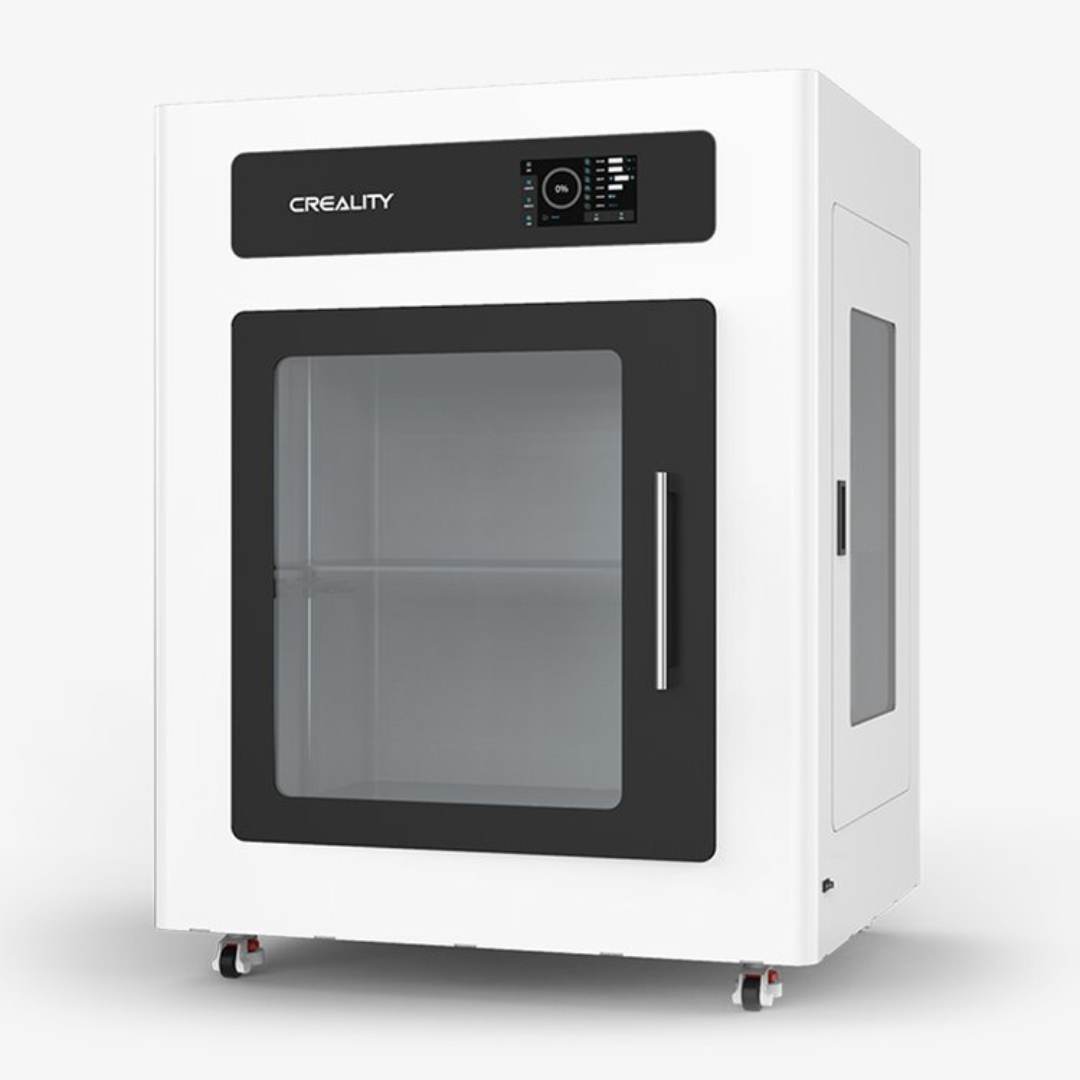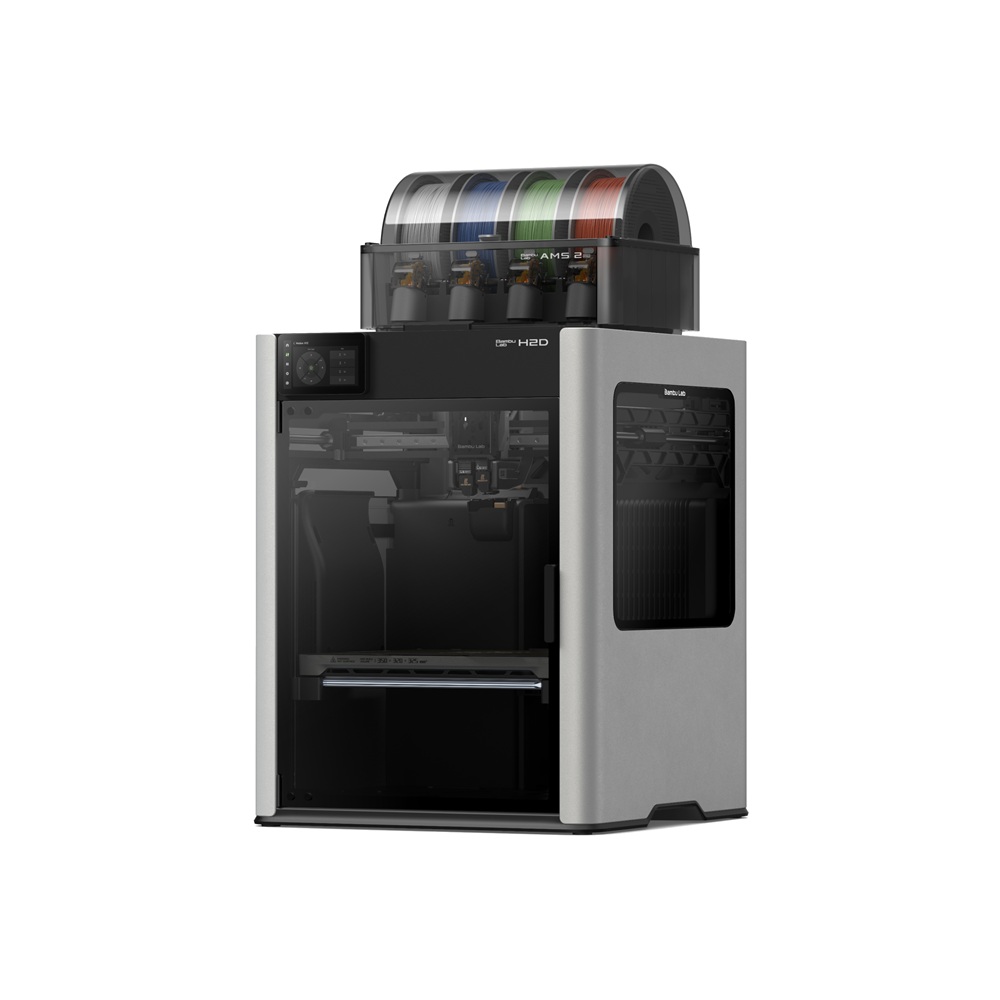Compare CR 5060 PRO vs H2D
Comparison between the best 3D printers
Choose the best 3D printer at the best price. The cheapest 3D printers are here.
Buy a 3D printer here with 3D Fila.
 |
 |
|
| Model | CR 5060 PRO |
H2D |
| Printing Material | Filament | Filament |
| Buy Filament for Creality 3D CR 5060 PRO | Buy Filament forBambu Lab H2D | |
| Estimated price | $4500,00 | $1899,00 |
| Manufacturer | Creality 3D | Bambu Lab |
| Release Year | 2021 | 2025 |
| Print Volume [mm] | 500x500x600 | 350x320x325 |
| Printer Size [mm] | 905x800x1150 | 492x514x626 |
| Weight [kg] | 140 | 42,3 |
| Power Loss Recovery | YES | YES |
| Enclosed printer | YES | YES |
| Bed Leveling | Automatic | Automatic |
| Filament End Sensor | YES | YES |
| Bed type | Heated | Heated |
| Power supply system | Bowden | Direct Drive |
| Standard nozzle | 0,4 | 0,4 |
| Maximum Nozzle Temperature [°C] | 300 | 350 |
| Maximum Bed Temperature [°C] | 110 | 120 |
| Maximum printing speed [mm/s] | 200 | 600 |
| Filament holder | YES | YES |
| Camera for supervision | NO | NO |
| Recommended filaments | PLA, ABS, PETG, PC, Nylon, Tritan | PLA, PETG, ABS, ASA, TPU, PVA, Nylon (PA) |
| Recommended slicers | Cura, Simplify, Slic3r | Bambu Studio |
| Maximum Resolution [mm] | 0,1 | 0,01 |
| Processor | ATMEGA 2560 | |
| Display | Display touchscreen 7'' | Touchscreen 5'' |
| Power Supply | 220V / 900 W | |
| Connectivity | SD / USB | Wifi, Bambu bus, Cartão SD |
| Operating systems | Windows, Mac, Linux | |
| Date of registration in the system | 2022-11-04 | 2025-03-31 |
| Release date | 2021 | 2025 |
| Extra features | Creality CR-5060 Pro 3D Printer: Designed to create large three-dimensional models, it offers a large workspace of 500 x 500 x 600 mm. It stands out for its fully enclosed work chamber, ensuring a constant temperature during printing, essential for the quality and precision of the models. Its robust structure, with dimensions of 905 x 800 x 1150 mm, is supported by a stable frame, providing durability and stability. The CR-5060 Pro offers easy access to the heated bed, either through the front door or the flap at the top of the casing, and includes a filament spool mounted in a lockable recess, ensuring material protection. Additionally, this printer is equipped with casters, facilitating its transport and handling in different environments. Ideal for professionals and enthusiasts looking for high quality in large-scale 3D prints. | Bambu Labs H2D combines high-speed 3D printing with a chamber heated up to 65 °C, dual extrusion with automatic nozzle switching, an AMS for filament drying and exchange, and AI sensors that detect failures. It offers optional laser and digital cutting capabilities, features intelligent calibration through computer vision, vibration control, enhanced fire safety, and real-time camera monitoring. |
| Support for multiple colors and materials (AMS and CFS) | NO | YES |
Notes * |
||
| Cost-benefit | 4 / 10 | 7 / 10 |
| Hardware | 3 / 10 | 8 / 10 |
| Tela | . | . |
| Print volume | 5 / 10 | 4 / 10 |
| Performance | 2 / 10 | 5 / 10 |
Conclusion |
| In conclusion, when comparing the Creality 3D CR 5060 PRO and the Bambu Lab H2D, several key differences and considerations come into play. The CR 5060 PRO is tailored for those seeking a large print volume and robust construction, making it ideal for creating larger models with high precision. However, it comes at a higher price point and may not offer the best value for casual users or hobbyists. Its extensive capabilities, including a fully enclosed chamber and a substantial build area, do cater to professionals and those needing industrial-grade output. Yet, its performance ratings suggest it might lag behind in speed and modern features compared to newer models. On the other hand, the Bambu Lab H2D stands out for its high-speed printing capabilities, advanced features such as dual extrusion, and intelligent calibration technology. It provides a solid balance of performance and affordability, making it an appealing choice for users looking for versatility and efficiency. Its smaller build volume might limit some applications, but the range of materials and enhanced connectivity options somewhat compensate for this. Overall, the choice between these two printers ultimately hinges on the user's specific needs: for larger, precise prints, the CR 5060 PRO offers robust performance, while the H2D provides more advanced technology and speed at a more accessible price, making it better suited for diverse and rapid prototyping tasks. |

